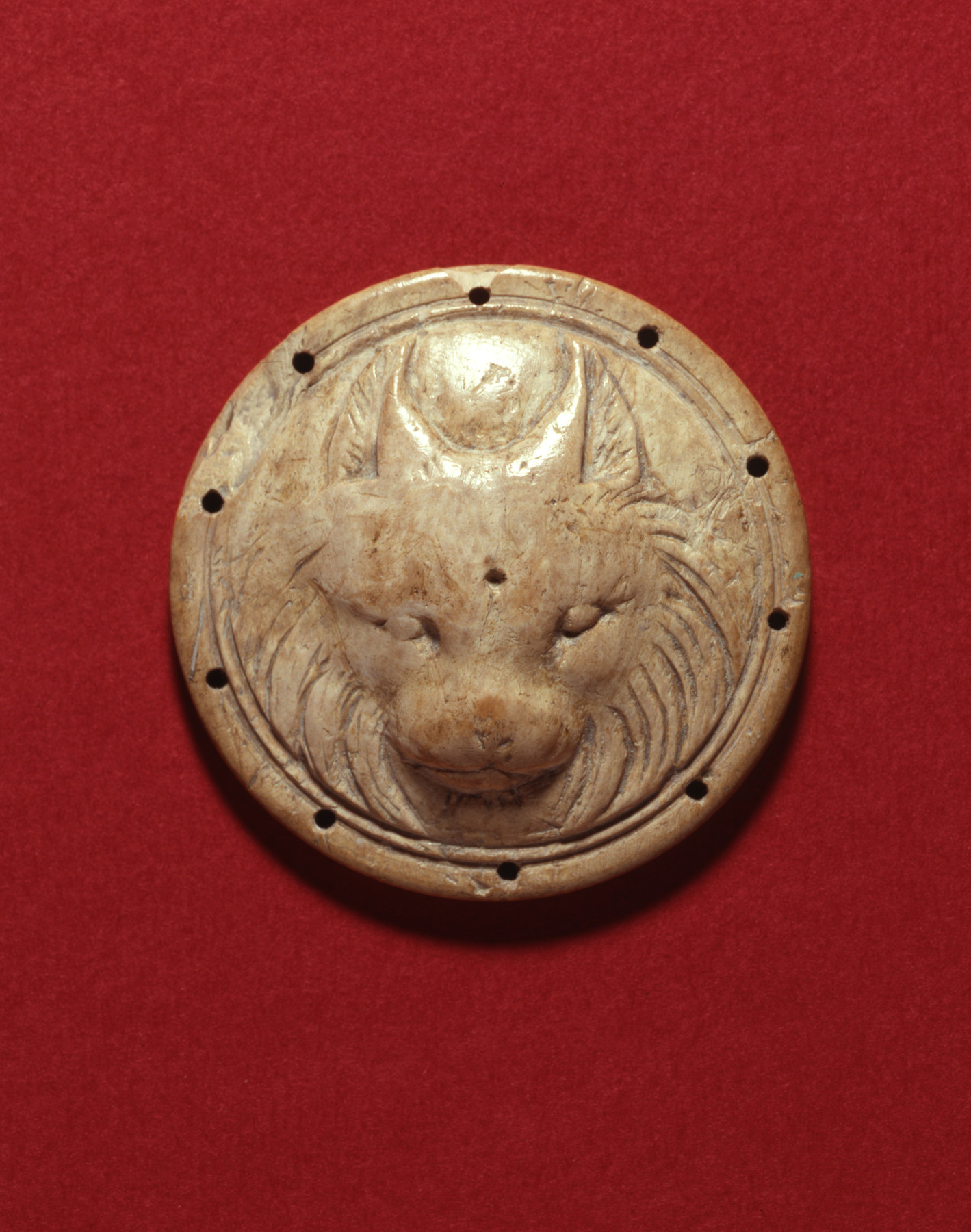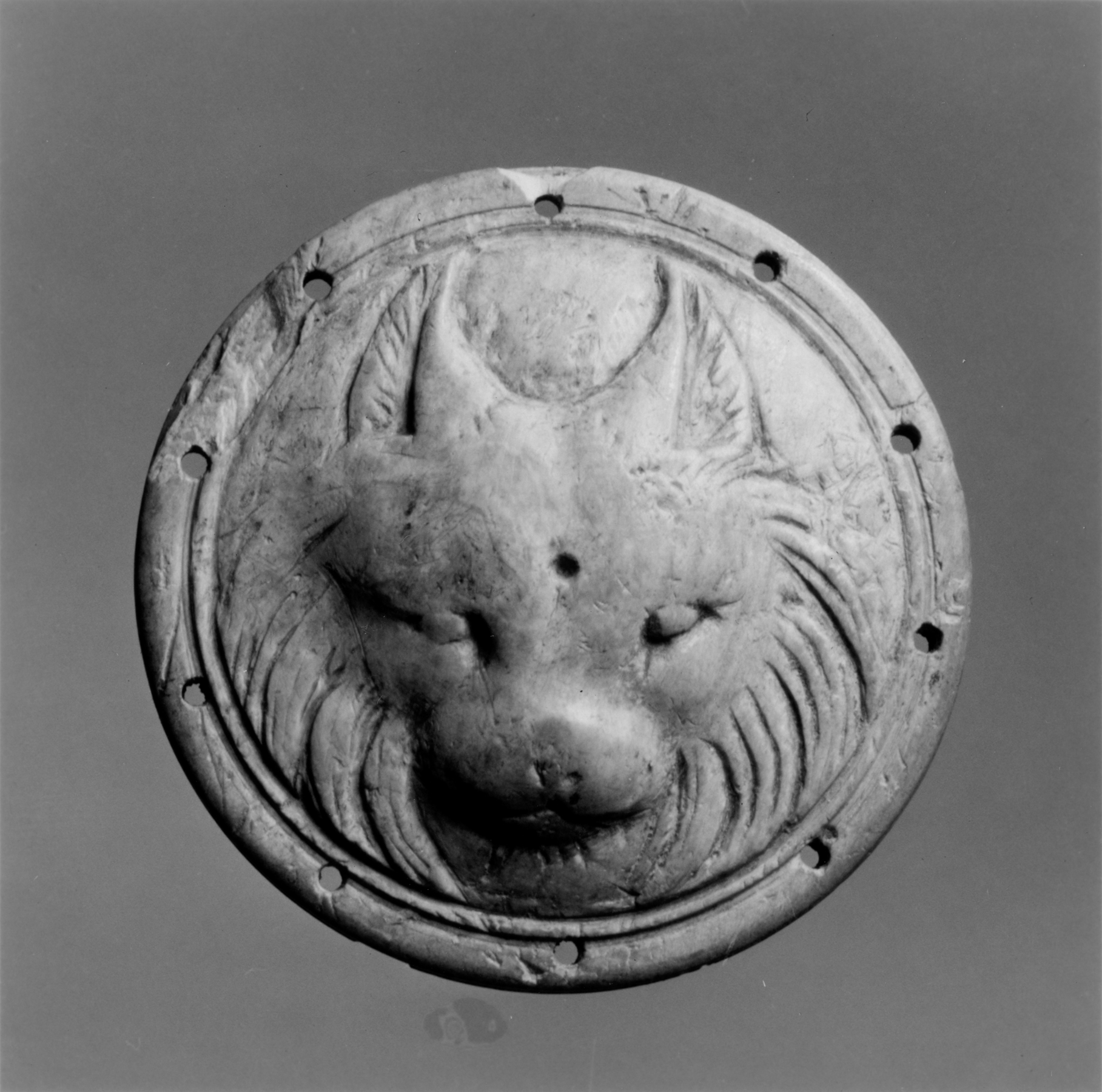Lion's Face
(Roman Empire )
Chipped at the top and upper left, this bridle ornament is otherwise intact. Ten holes at the perimeter allowed the roundel to be sewn to a leather bridle. A lion's head, ears upright, ruff enclosing the face, is done in relief. A stepped border surrounding the head was drawn with a compass, centered at the pinprick indentation in the lion's forehead. The edge of the roundel is grooved. Horse trapping ornaments of this sort, called "phalerae" in antiquity are also known in silver.
Alternatively, though less likely, this ornament could have been sewn or pinned to "ptergys," the leather worn by Roman soldiers, and visible on so many marble statues of emperors and other notables.
Provenance
Provenance (from the French provenir, 'to come from/forth') is the chronology of the ownership, custody, or location of a historical object. Learn more about provenance at the Walters.
Henry Walters, Baltimore, 1913, by purchase; Walters Art Museum, 1931, by bequest.
Exhibitions
| 1983-1984 | Ivory: The Sumptuous Art. The Walters Art Gallery, Baltimore. |
Conservation
| Date | Description | Narrative |
|---|---|---|
| 8/1/1982 | Treatment | cleaned |
| 8/18/1982 | Treatment | cleaned |
Geographies
Roman Empire (Place of Origin)
Measurements
H: 1 3/4 in. (4.4 cm)
Credit Line
Acquired by Henry Walters, 1913
Location in Museum
Not on view
Accession Number
In libraries, galleries, museums, and archives, an accession number is a unique identifier assigned to each object in the collection.
In libraries, galleries, museums, and archives, an accession number is a unique identifier assigned to each object in the collection.
71.618




